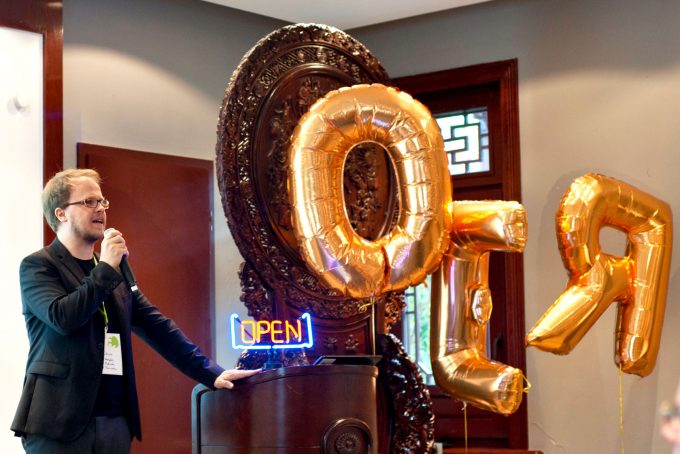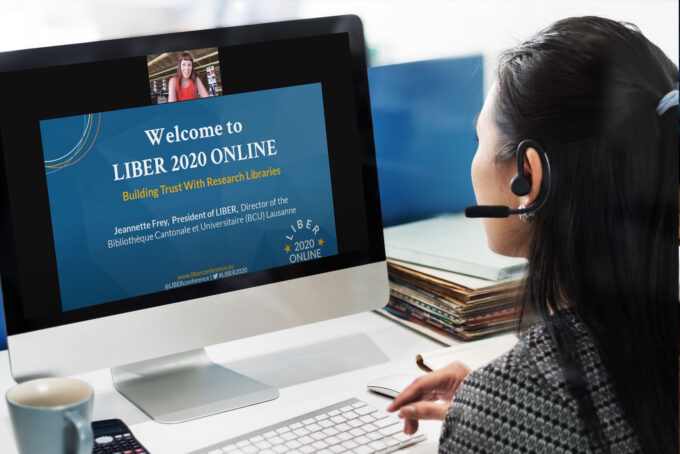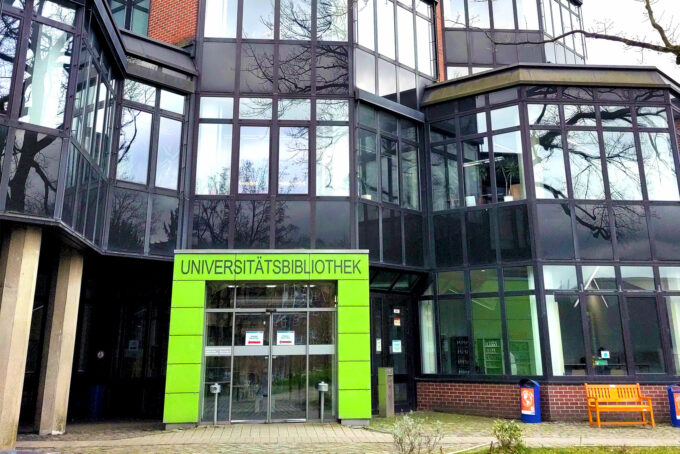
New spaces for Work 4.0 and Learning 4.0: Implications for the Education System?
New forms of Learning 4.0 and Work 4.0 and the necessary co-creative spaces that support communities were at the centre of the Leuchtfeuer 4.0 MOOC. Parallels to the Open Science movement could be demonstrated, and that public libraries are among the pioneers as providers of new learning spaces such as makerspaces.
The Leuchtfeuer 4.0 MOOC was held from 19.04. to 03.05.2017 as a live MOOC. Those who did not manage to stay on the ball during this period, including the author of this article, can also view the video recordings as an on-demand course on the mooin” MOOC platform after the end of the MOOC.
Likewise, the forums and the “base camp kitchen” on Facebook remain open for contributions and discussions, and the discussion can be followed on Twitter at #feuer40.
🔥 MACH' MIT: "Leuchtfeuer 4.0 MOOC" zu Arbeit & Bildung 4.0. Seid neugierig, schaut vorbei & macht mit! https://t.co/ZpxhA3mgoj #feuer40 pic.twitter.com/pLM05cbl6L
— Nicole Bauch (@nbauch) 19. April 2017
MOOC embodies principles of Work 4.0 and Learning 4.0
The MOOC was initiated by Anja C. Wagner, Joachim Sucker and Nina Oberländer. But a large number of supporters also helped to fill it with life. The MOOC is a collaborative event; in principle, it exemplifies the topics of Learning 4.0 and Work 4.0, so to speak, by opening a space of opportunities for exchanges on an equal footing, the joint development of new knowledge, collaboration and community education. It gives freedom to the individual participants and does not impose the “right” way for navigating through the MOOC. All interested parties could or can contribute co-creatively, for example, in the discussion forums and with self-guided video interviews with operators from spaces.
The basic idea behind the MOOC is that a radical change in the world of work means that the educational system of the 20th century no longer works and therefore new approaches are needed. On the other hand, the problem of shrinking rural regions, from where people move away, is addressed with the MOOC.
Motivation: Stimulating community and practical projects
The Leuchtfeuer 4.0-MOOC is the first part of the two-stage project “Regional Education 4.0”. The MOOC serves as a “base camp” in which the thematic impulses are set, the new topics are mapped collectively, and a shared-interest community is created. The MOOC is intended to stimulate consideration on how to initiate the transformation personally, and which specific projects one wants to build locally on-site from the bottom up. In a second phase, these projects are put into practice in a smaller ‘community of practice’ in model regions and the lessons learned will be exchanged.
Technological developments enable new forms of learning and work
As a starting point for these developments, technological developments such as blockchain, big data, drones, artificial intelligence, the Internet of Things, robots and 3D printing were presented in the online course, and their (potential) impact on society and sociocultural movements such as the Maker movement were discussed. This was followed by the question of what new professions will be created; ideas for this have been collected in a further expandable list of new professions. This was how the topic of the new spaces needed for learning and working was established.
Kam gestern nicht mehr aus dem Lachen raus. Die Neuen Berufe sind so toll. https://t.co/ebXnaEwBcv #feuer40 #lasttweet
— anja c. wagner (@acwagner) 29. April 2017
What is special about the new initiatives and spaces?
The initiatives presented originate from individual people who get together and set something up. They do not come from political, economic or institutional contexts. The aspect of collective responsibility plays a central role.
For this, new and open spaces are needed. These are spaces in which communities can form, and people can determine how and what they want to learn by themselves. There is no longer a separation between students and teachers. Everyone is sometimes one, and sometimes the other.
Die zweite Woche im #feuer40 ist gestartet. Es wird konkreter in Bezug auf Projekte und Kooperation. pic.twitter.com/5Kb5Jx8FVV
— Andrea Brücken (@dieHauteCulture) 26. April 2017
The open spaces for self-determined co-learning include, for example, makerspaces, co-working spaces and tech-shops, which have so far existed mainly in the USA. Interviews with operators of co-working spaces or makerspaces, for example, the Cloudsters Lübeck, fablab Lübeck, KALLE, co-creative workshop, Bremen and the Betahaus Hamburg gave an insight into the communities, working methods, organisational structures, legal forms and financing of these open spaces.
Die zweite Woche im #feuer40 ist gestartet. Es wird konkreter in Bezug auf Projekte und Kooperation. pic.twitter.com/5Kb5Jx8FVV
— Andrea Brücken (@dieHauteCulture) 26. April 2017
Libraries as pioneers of open spaces
In the MOOC, libraries, especially public libraries, were given a pioneering role in setting up their own makerspaces. Several video interviews were conducted with representatives of pioneering projects from libraries:
- Interview with Bettina Scheurer, Cologne City Library
- Interview with Dörte Kleyling and Karin Liebertz, Schiller-Library Berlin-Mitte
- Presentation of people and premises
- Interest groups, who address them and who comes to them
- and the motivations of the participants
Videos, which include interviews with Stefan Kaplon from the City Library of Verden:
Open spaces for education – role change for education providers
The new co-creative spaces are useful to a wide range of stakeholders and can contribute to regional development. In the MOOC forum, a list of 21 (potentially) interested stakeholders was compiled, including freelancers, companies, municipalities and BarCamps.
Wir sprechen über CoWorking, MakerSpaces, Community-Building, VHS, Wechselwirkungen zu Institutionen… #feuer40 —> https://t.co/teU7K04dPJ
— anja c. wagner (@acwagner) 26. April 2017
Among the educational aspects, the services of workshops and training in co-working spaces and makerspaces are interesting. The providers include the Betahaus Hamburg with its Betahaus Academy (link in German) or even city libraries, such as Cologne City Library (link in German). It is possible that new roles for community colleges will be similar if they set up such spaces.
Wie lernen Erwachsene in Zukunft?
Mit Co-Learning-Spaces, Bildungsberatung, Maker-Spaces und guten Kaffee.https://t.co/ajQHjkIlW7#feuer40— Jöran (@joeranDE) 26. April 2017
New forms of learning – what happens to “traditional” learning?
Work 4.0 and Education 4.0 include self-determined, practice-oriented learning. The maker movement leads the way here. The hitherto prevalent separation between learners and teachers is dissolved. How does the traditional education system deal with this role change? How will working and learning change through these developments? Based on this, are formalised programmes and education attainment with exams still useful at all in the future? Questions which also have to be faced by universities.
The example of the Christian-Albrechts-University of Kiel (CAU) fits into this context. Frauke Godat from the “PerLe Project – Successful Teaching and Learning at the CAU” outlines in the interview, how co-working spaces, makerspaces and FabLab have emerged in the immediate vicinity of the university in Kiel, or emerged from it.
In addition, she also presents the Real Laboratory Kiel, which was initiated by the CAU.
Real Laboratories (link in German) usually work on a distinct topic and can be regarded as a pedagogical method in the broadest sense. They offer a design space in which students, scientists and real-life stakeholders from society can get together and carry out experiments in the real world. In this way, the latest insights can be obtained for both practical applications and science.
Parallels between Education and Work 4.0 and Open Science
The MOOC also reveals a multitude of thematic parallels to Open Science, even though the associated opening and the change in values in the MOOC appear more radical than what many in the science system probably imagine so far. This concerns, for example, the dissolution of separate hierarchical roles of teachers and students. Above all, cultural barriers could hinder the rapid adoption of Work 4.0 and Learning 4.0 as well as Open Science. It is possible that many would like to experience Work 4.0 and Learning 4.0 in the science system but still have a long way to go between the two worlds because they are forced to adapt themselves to the still prevailing, traditional system with its power structures and reward mechanisms.
It will also be interesting to see what the further impacts on libraries will be, whether for example, comprehensive and scientific facilities with makerspaces will be available, and whether co-working spaces will be increasingly set up or used by library staff.
End of the MOOC – green light for your own projects
The end of the MOOC is only the beginning in the eyes of its makers. As a prelude to the implementation of your own projects, it provides much inspiration, offers examples from individuals who simply get cracking and do it, and testifies to the power of the community.
Spannende Ideen und Anregungen wurden während des MOOCs #feuer40 gesammelt: Der heutige Abschluss ist aber nur der Anfang!
— perspektive3 (@perspektive3) 4. Mai 2017
View Comments

EUDAT: Research Data Infrastructure and European Open Science Cloud Vision
How research data infrastructure initiatives are relevant to European Open Science...



